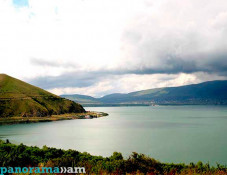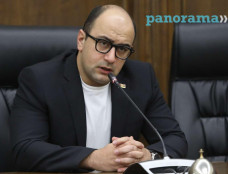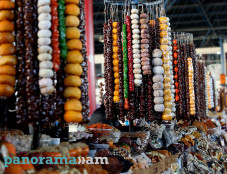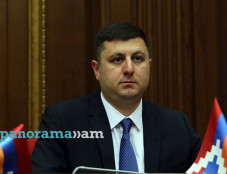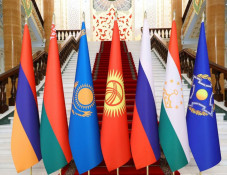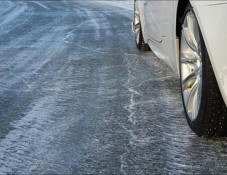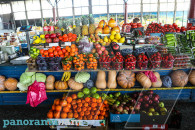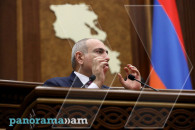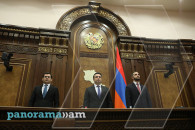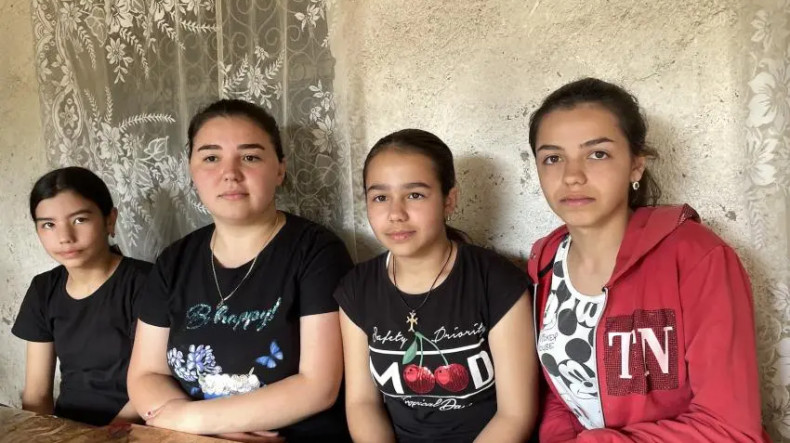
HRW: Driven by fear from Nagorno-Karabakh
In September this year, Azerbaijan regained control of all of Nagorno-Karabakh. Ethnic Armenian forces surrendered to Azerbaijan after one day of fighting, and nearly all of the region’s 120,000 ethnic Armenians fled. Agnessa and her family were among them.
Azerbaijani authorities have repeatedly said that everyone’s rights will be protected in Nagorno-Karabakh, yet such assurances are difficult to accept at face value after decades of conflict, impunity for alleged crimes, including against civilians during hostilities, the Azerbaijani government’s overall deteriorating human rights record, and the recent Azerbaijan-imposed, nine-month de facto blockade of the region, which left the Armenian population without enough food, medicine, and fuel, Tanya Lokshina, Associate Director for Human Rights Watch's Europe and Central Asia Division, says in a report.
Agnessa Avanesyan, a 22-year-old in a black t-shirt with a sparkly “Be Happy” inscription, smiles shyly from across the wooden table in Tatev, a mountain village in southern Armenia. She and her parents, grandpa, and four siblings arrived there from Nagorno-Karabakh on September 28. They are staying with relatives, all crammed into a small rural house for now – homeless, destitute, and still disoriented after an arduous three-day journey. Like tens of thousands of other ethnic Armenians, they fled Nagorno Karabakh when Azerbaijan re-took control.
They were driven by fear.
Agnessa and her 18-year-old sister, Amanda, lived in Stepanakert (Khankendi in Azeri), Nagorno-Karabakh’s largest city. Agnessa, a recent university graduate, taught at school there, and in September Amanda had begun her first year at the university. In the early afternoon of September 19, when Azerbaijani forces attacked, the city lost electricity and phones stopped working. The sisters felt distraught and did not know what to do: Their family were all in Khndzristan (Almali in Azeri), a village 24 kilometers away. They spent the night in the basement shelter of a hospital, shuddering at the sounds of explosions, hungry and cold.
At 6:00 a.m. the next day, the sisters headed to the village on foot, desperate to reunite with their loved ones. They hitched a ride for part of the way, running uphill for the last five kilometers. “We didn’t think we’d make it,” Agnessa says. “The shelling was so close, the ground seemed to shake … but when we finally got there, not only our family, the entire village was waiting for us. They thought we disappeared or died. Our little sisters, they’re just 11 and 12, they were crying so hard.…”
On September 25, as soon as Azerbaijani forces opened the “Lachin corridor” – the road linking Nagorno-Karabakhto Armenia – the villagers started leaving. The head of the local de-facto administration warned that Azerbaijani soldiers would come at any moment, and no one wanted to risk staying. Agnessa’s family did not have a car, so they split up, squishing into three different vehicles driven by neighbors. Agnessa and Amanda perched on the back seat, sitting on top of the hastily packed things of a four-person family, who all squeezed into the two front seats. The car was so jam-packed the sisters could not take any of their own belongings, except a little bread and water. There was no space.
The car barely had any petrol. Since Azerbaijan’s de facto blockade of Nagorno-Karabakh, petrol was a rare commodity. They heard that some petrol was available at the gasoline warehouse near the Stepanakert-Askeran highway, on the way to Stepanakert/Khandendi. And indeed, there was a huge gas tank there, provided by Azerbaijani authorities and open for all. In their desperation, people were literally storming it, no one was supervising the distribution of fuel, and a tragedy struck.
“We queued up for two hours before finally getting gas and driving on. And in another hour, when our uncle was there, also waiting for gas, the whole thing just blew up. And our uncle was right there, he was hurt so badly.… They evacuated him to a hospital in Armenia, but he is still in very bad condition, it’s touch and go.… Over a dozen of our neighbors were also hurt there. We were lucky to have left there just a little earlier,” Agnessa sighs. Later, de facto authorities of Nagorno Karabakh reported that that 220 people died as a result of the explosion, the cause of which is unknown.
The road to Armenia was so clogged – cars, trucks, tractors, construction vehicles, you name it – that the tiny distance from the village to Stepanakert/Khankendi took three hours, not counting the time they queued up for gas. The trip onward to Goris, on the Armenian side of the border, which under normal circumstances takes less than 90 minutes, took another 42 hours. Agnessa had no idea where the cars with the rest of her family were. You could not find anyone in the colossal stand-still traffic jam on the twisted mountainous road.
“But the fear was the worst,” she said. “Seeing all those Azerbaijani soldiers on the road.… All we were thinking of was to get away.”
Agnessa describes the multiple traumas on the road, starting with the first, cold and rainy night:
"Whatever warm clothing our family was able to pack were in the tractor grandpa was riding. We were shivering all night from the cold because the car was moving half a meter per hour. An old man died in a truck close to us. He was too sick, too frail.… Many cars broke down on the road, the brakes didn’t work, there were crashes.…
"A construction crane, in which three people were riding, fell on top of a car full of people, they all got banged up, but fortunately, no one got killed. We had a large canister of petrol, so we could fill up the tank on the way, but many did not and had to stand on the road for hours waiting for a truck which could spare some. There were also people who abandoned their cars all-together. Our bread and water ran out before nightfall. We were starving and so thirsty. Grandpa actually had water and some food with him in the tractor, but we could not get to him, and he couldn’t find us in that madness. The cold, the hunger, the thirst, we were half-dead ourselves by the time we arrived at the border."
Today in Armenia, Agnessa and her sisters talk about their native village, about their cellar full of potatoes and other produce, about their chickens, ducks, and geese. Unlike their friends in Stepanakert/Khankendi, they never had to go hungry during the blockade. But their family has left everything behind. “I don’t know what we are going to do,” Agnessa says. “If we could only go back to pick up our things, our poultry.… But how can we do this? Who is going to guarantee our safety? If it were safe for us there, we would never have left our home.”
Newsfeed
Videos





